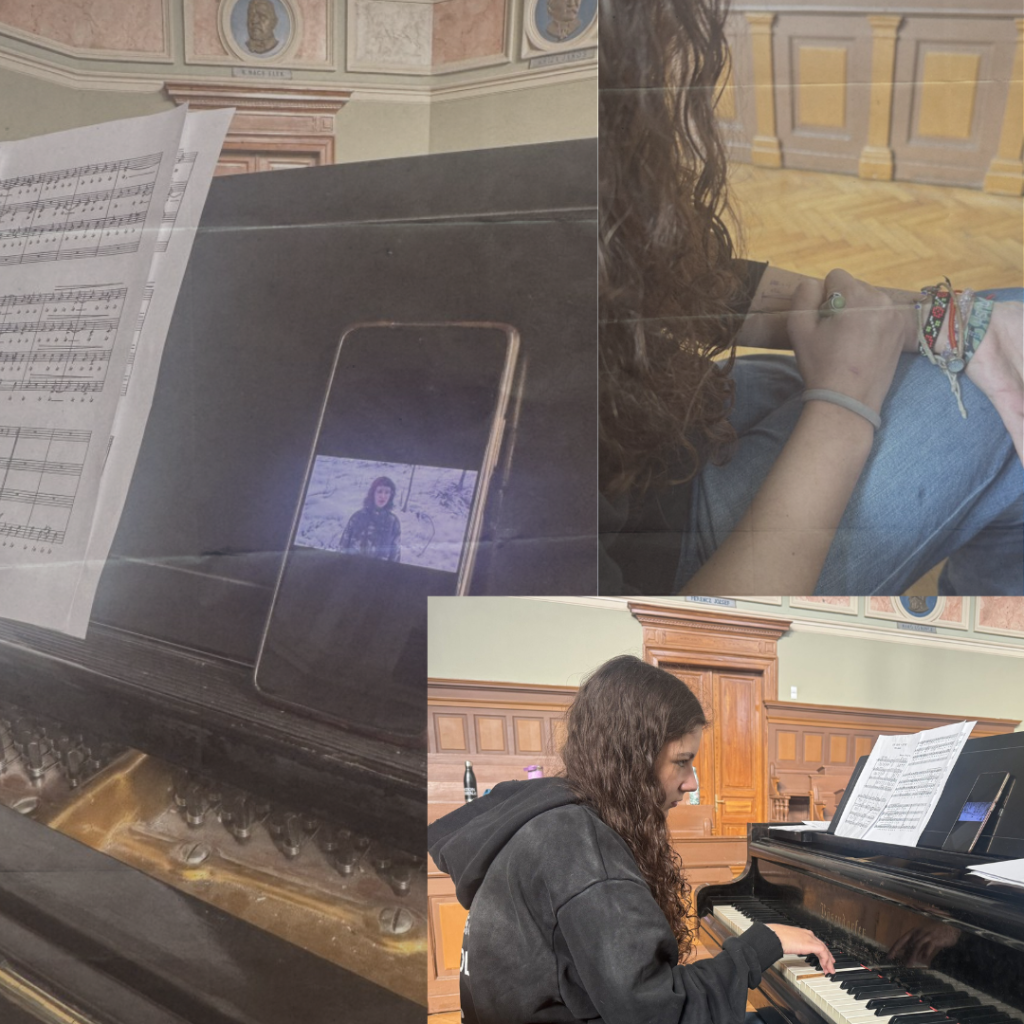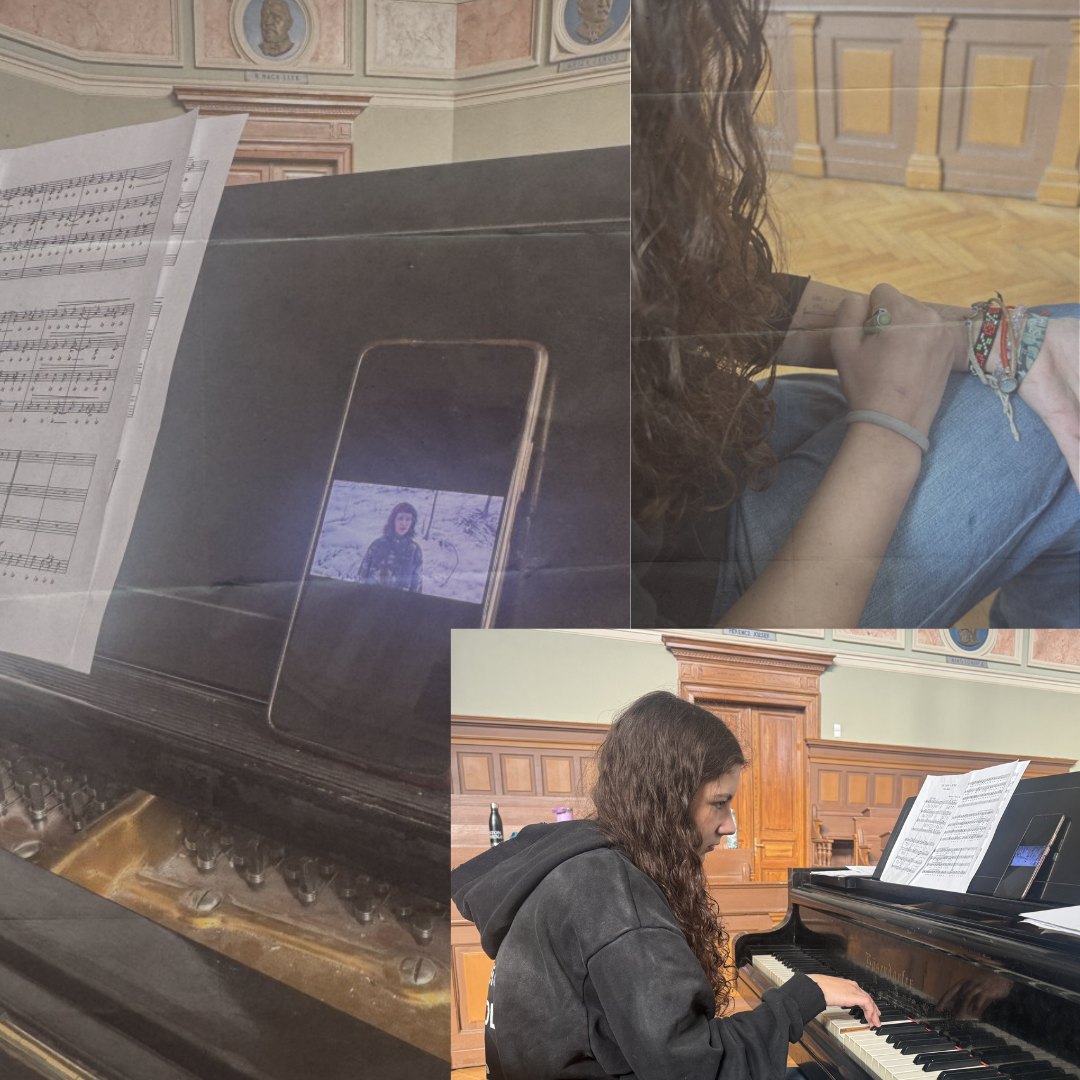I was responsible for composing the soundtrack for our film opening. I’ve been playing the piano since I was five, but only in the classical style like playing scales and reading music sheets— I played mostly Bach. This time, however, I was challenged to create my own interpretation for our pre-recorded “silent” movie. After some reflection and rumination, my teammate Carla and I faced another challenge: finding the right place to record the music. An electric piano wasn’t a fit because it lacked the atmospheric sound, echo and depth we really needed.
Then, I remembered that there was a large Hungarian school next to my flat that had a grand ballroom with a royal piano. Without hesitation, I went over to ask the security if we could use the ballroom for literally 15 minutes. It was a bit tricky, as I don’t speak Hungarian, but somehow, I managed to communicate with them. After a minute of forced “communication” the keys were in my hands. Just when we thought we had everything sorted, we ran into another issue: we only had about 20 minutes to record because apparently the school choir was about to have a lesson. We had to rush!!
I didn’t have a concrete plan whatsoever, so Carla set up the movie in front of me, and I started to play whatever came to mind as I watched. For about seven minutes, I was in the zone, composing on the fly. I sketched down all my ideas on my arm—notations for the dynamics, where to use the chromatic scale, when to add a crescendo, and more. We started recording immediately and didn’t have time for anything else—no talking, no breaks.
Just as we finished, the choir students walked in, and our timing couldn’t have been more perfect. And that’s how our movie got its soundtrack.

For one of our key scenes, I chose to use a chromatic scale with the pedal fully pressed as part of the soundtrack. This musical choice played a vital role in shaping the atmosphere of our horror mise-en-scène. The overlapping and awfully dissonant notes created a haunting sound, which intensified the feeling of unease and psychological tension. It gave the impression that reality was slipping — a sensation that matched the visuals and themes of our film opening. This sound design decision not only supported the narrative but also deepened the emotional impact on the audience.

Leave a Reply